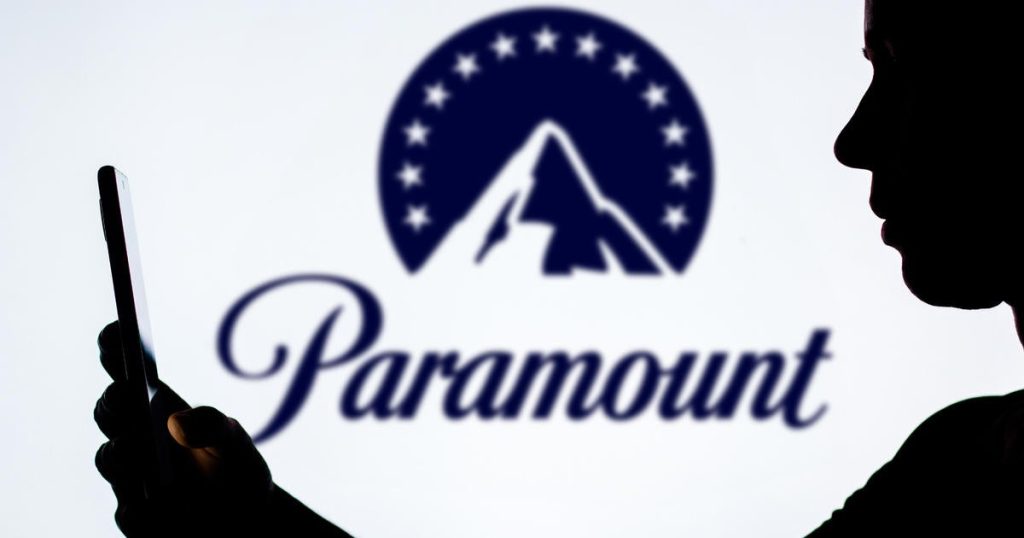YouTube TV has successfully reached an agreement with Paramount, ensuring the continued availability of popular channels such as CBS, Comedy Central, Nickelodeon, and MTV. This deal follows a period of uncertainty after negotiations stalled earlier due to disputes over carriage fees. As part of the agreement, YouTube TV will maintain access to over 100 channels and introduce more options for users, demonstrating the company’s commitment to delivering diverse content to its subscribers.
| Article Subheadings |
|---|
| 1) Background of the Agreement |
| 2) Details of the New Deal |
| 3) The Role of Carriage Fees |
| 4) Implications for YouTube TV Subscribers |
| 5) Future Prospects for Streaming Agreements |
Background of the Agreement
The recent agreement between YouTube TV and Paramount comes after a backdrop of intense negotiations marked by uncertainty. These talks were primarily focused on renewing the contract that allowed YouTube TV to stream certain Paramount channels. Initially, negotiations started towards the end of the previous contract term, but discussions hit a snag when Paramount and YouTube TV couldn’t agree on key terms, particularly concerning carriage fees. Paramount’s criticism of YouTube TV’s proposal indicated a growing tension between streaming services and traditional broadcasters regarding the financial aspects of content distribution.
Details of the New Deal
The final deal announced on Saturday night confirmed that YouTube TV will continue to offer Paramount’s range of channels, including broadcast networks like CBS and popular cable outlets such as Comedy Central and Nickelodeon. YouTube emphasized that not only would they retain these channels, but the service would also enhance its offerings by adding Paramount+ with SHOWTIME to its subscription package. This is expected to not only broaden viewer choice but also reposition YouTube TV competitively amid a saturated streaming market. In their statement, YouTube lauded subscribers for their patience, confirming that the agreement points towards a more robust partnership moving forward.
The Role of Carriage Fees
Carriage fees are a critical aspect of agreements between cable providers and broadcasters. These fees represent the amounts paid by a streaming service like YouTube TV to access and broadcast the programming of networks such as Paramount. The situation leading up to the agreement indicates escalating tensions within the industry, as both sides seek to optimize their financial arrangements. Prior to the agreement, Paramount accused YouTube TV of proposing “one-sided terms,” while YouTube contended they were aiming for a balanced resolution that would benefit both parties. The resolution of these disputes is essential, as prolonged disagreements can lead to disruptions in services and impact subscriber satisfaction.
Implications for YouTube TV Subscribers
With this renewed contract, YouTube TV’s more than 8 million subscribers can breathe a sigh of relief, knowing they will continue to have access to popular Paramount channels. This agreement arrives on the heels of a price increase implemented in January, where basic subscription costs rose by $10 per month, causing some concern among viewers. However, with the reassurance of maintaining essential programming, YouTube TV appears committed to justifying this increase through valuable content delivery. Subscribers can also look forward to enhanced options and new channels, indicating the platform’s efforts to diversify its content, keeping step with competitors in the market.
Future Prospects for Streaming Agreements
The renewed collaboration between YouTube TV and Paramount reflects broader trends in the streaming industry, where content providers and distributors are increasingly vying for favorable terms as viewership shifts towards digital platforms. As more viewers turn to streaming services for their entertainment needs, the stakes have been raised significantly. The recently completed negotiations may serve as a template for future agreements, where traditional cable networks and new-age streaming platforms must navigate complex discussions about revenue sharing, viewer access, and the evolving landscape of content consumption. Going forward, both providers may seek to build on this agreement, potentially leading to more integrated services that combine traditional cable offerings with innovative streaming solutions.
| No. | Key Points |
|---|---|
| 1 | YouTube TV has secured a renewed agreement with Paramount, retaining access to major channels like CBS and Nickelodeon. |
| 2 | The deal follows unsuccessful negotiations regarding carriage fees that initially left the future uncertain. |
| 3 | Carriage fees are pivotal in discussions between streaming services and traditional networks, impacting programming access. |
| 4 | Subscribers can expect an expanded range of offerings, including the integration of Paramount+ with SHOWTIME. |
| 5 | The agreement highlights the ongoing tensions and necessary negotiations within the evolving landscape of the streaming industry. |
Summary
The recent agreement between YouTube TV and Paramount is a landmark deal that showcases the significance of ongoing negotiations within the media industry. As streaming services face increasing competition, securing essential programming rights remains a top priority. This deal not only provides stability for YouTube TV subscribers but also sets the stage for future collaborations in the ever-changing landscape of digital media distribution.
Frequently Asked Questions
Question: What are the implications of carriage fees in streaming agreements?
Carriage fees are crucial in determining the financial terms between streaming services and broadcasters, affecting the ability of providers to offer certain programs. Disputes over these fees can lead to negotiations that disrupt service access for subscribers.
Question: How does this deal benefit YouTube TV subscribers?
Subscribers will continue to enjoy access to popular networks while also gaining enhanced options, including the addition of Paramount+ within their subscription. This ensures they can access a broad range of content without interruptions.
Question: Why is content distribution increasingly complex?
The growth of streaming platforms has created a competitive environment where traditional cable networks and streaming services must navigate intricate negotiations to ensure viewer access while maximizing revenue, leading to more frequent discussions and occasional disputes.


